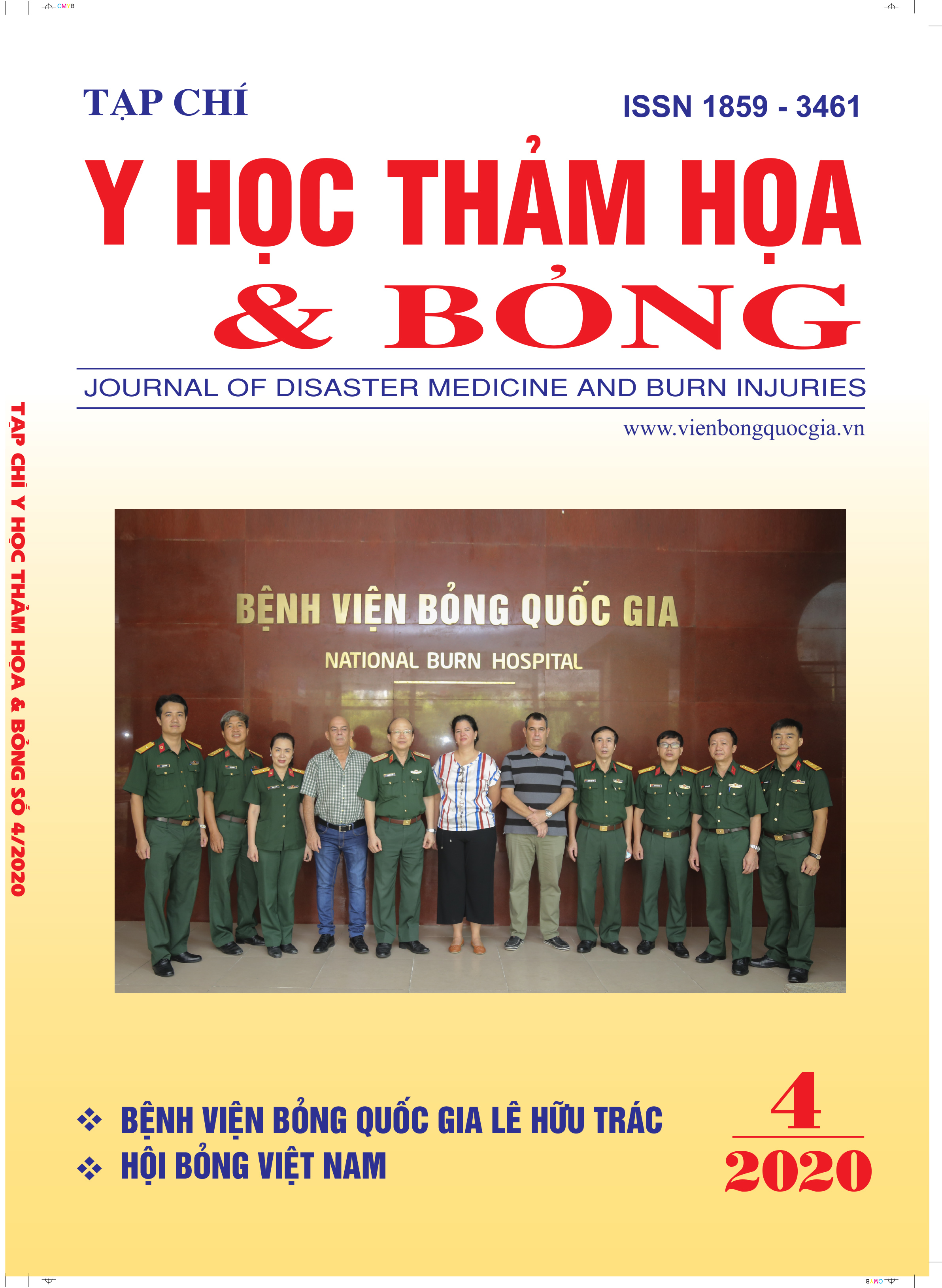Clinical and epidemiological characteristics in elderly burns treated at the National Burn Hospital for 3 years (2017 - 2019)
Main Article Content
Abstract
Aims: Describe some epidemiological, clinical characteristics and results of burn treatment in the elderly patients treated at the National Burn Hospital.
Objects and methods: The retrospective study was on 586 elderly patients (≥ 60 years old) who were hospitalized and treated at the National Burn Hospital from January 1, 2017, to December 31, 2019.
Study indicators: Years old, sex, residence, cause of the burn, total body surface area (TBSA) and deep burn area, combine with severe chronic disease, combined injury; complications and results of treatment.
Results: Elderly burned account for 6.27% of the total number of inpatient burn patients. The average age of them is 70.09 ± 8.7 years. The ratio of Male / Female = 1.3 / 1; patients coming from rural areas account for 59.9% and 91.6% have health insurance. Dry heat burns are 49.5%, wet heat burns are 37%, electric burns are 11.4%, the lowest are chemical burns (2%). Most of the burns are caused by life accidents (84.3%), intentionally burned by accident (8.9%), burns caused by traffic accidents (3.9%), and work accidents (2.9%). Burn patient's rate combined with inhalation injury burns was 4.1%. The average burn area was 11.96 ± 17.25% TBSA, deep burns patients were 60.2%, with an average deep burn area of 4.63 ± 10.47% TBSA. 28.2% of burns patients had from 1 to 3 severe chronic diseases with cardiovascular diseases have the highest prevalence (15.4%), followed by diabetes (7.3%) and neuropathy (6.1%).
During when the treatment, 7.78% of patients suffer from complications, very often multiorgan failure (4.44%), septic shock (2.56%), burns shock (1.88%), gastrointestinal bleeding (1.02%). Treatment Outcome: The overall mortality rate was 9.6%. Inhalation injury burns have a very high mortality rate (95.8%).
Conclusion: The rate of the elderly burned has a propensity to increase; the death rate is high, especially when inhalation injury burns.
Article Details
Keywords
Elderly, burns elderly, mortality rate
References
2. Nguyễn Ngọc Tuấn (chủ biên), Bỏng - Giáo trình sau đại học, NXB QĐND, Hà Nội, 2018.
3. G.S. Abu-Sittah, F.M. Chahine, and H. Janom, Management of elderly burn patients. Ann Burns Fire Disasters. 2016 Dec 31; 29(4): 249-245.
4. Mabrouk, A., A. Maher, and S. Nasser, An epidemiologic study of elderly burn patients in ain shams university burn unit, Cairo, Egypt. Burns, 2003. 29(7): p. 687-690.
5. Đức;, N.M., Đặc điểm thu dung bệnh nhân điều trị bỏng tại viện bỏng quốc gia từ năm 2008 đến 2017. Tạp chí Y học thảm họa và bỏng, 2018. 5/2018.
6. Bayuo, J., et al., Epidemiology and outcomes of burn injury among older adults in a Ghanaian tertiary hospital. Burns Open, 2018. 2(2): p. 98-103.
7. Chang EJ, Edelman LS, Morris SE, et al, Gender influences on burn outcomes in the elderly. Burns, 31(1): 31-35, 2005.
8. Lumenta D.B, A. Hautier, C. Desouches et al, Mortality and morbidity among elderly people with burns - evaluation of data on admission. Burns 34 (2008), pp. 965-74.
9. Harats, M., et al., Trends and risk factors for mortality in elderly burns patients: A retrospective review. Burns, 2019. 45(6): p. 1342-1349.
10. Albornoz CR, Villegas J, Sylvester M, et al, Burn are more aggressive in the elderly: the proportion of deep burn area/ total burn area might have a role in mortality. Burns, 37(6): 1058-61, 2011.
11. Santos, D.C., et al., The effect of comorbidities and complications on the mortality of burned patients. Annals of Burns and Fire Disasters, 2017. 30(2): p. 103.
12. Emami, S.-A., et al., The epidemiology of geriatric burns in Iran: A national burn registry-based study. Burns, 2016. 42(5): p. 1128-1132.


